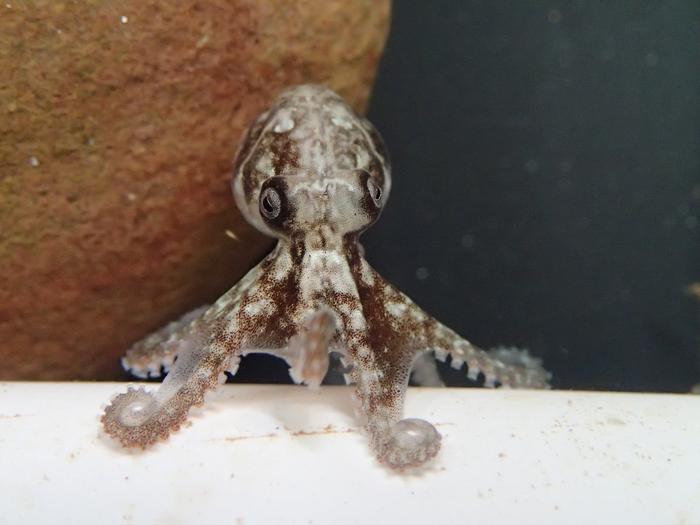Eukaryotes’ Deep Origin Outside Heimdallarchaeia
Unearthing the Roots of Life: New Evidence Places Eukaryotic Origins Deep Within Asgardarchaeota In a groundbreaking study that reshapes our understanding of the tree of life, researchers have unveiled compelling genomic evidence pinpointing the origin of eukaryotes outside the Heimdallarchaeia lineage yet still nested within the enigmatic Asgardarchaeota superphylum. This discovery, driven by extensive sediment […]


Unearthing the Roots of Life: New Evidence Places Eukaryotic Origins Deep Within Asgardarchaeota
In a groundbreaking study that reshapes our understanding of the tree of life, researchers have unveiled compelling genomic evidence pinpointing the origin of eukaryotes outside the Heimdallarchaeia lineage yet still nested within the enigmatic Asgardarchaeota superphylum. This discovery, driven by extensive sediment sampling from diverse coastal wetlands across China and cutting-edge metagenomic techniques, offers unprecedented insight into life’s evolutionary trajectory, bridging the gap between simple prokaryotes and complex eukaryotic cells.
The exhaustive sampling effort spanned six ecologically distinct wetlands, including mangrove swamps and salt marshes, from locations such as Techeng Island, Qingmei Port, Tongming Port, Dongzai Port, Changjiang Estuary, and Luchao Port. Researchers collected forty sediment samples using meticulous anaerobic protocols to preserve nucleic acids from ancient microbial communities. Each core was sectioned at several depths ranging from surface layers to one meter deep, providing vertical biodiversity snapshots critical for phylogenetic reconstruction.
State-of-the-art DNA extraction and sequencing were employed, utilizing Illumina HiSeq 2500 platforms that generated staggering volumes of raw data—amounting to terabases in total. Each sediment fraction underwent de novo assembly with SPAdes software, followed by binning through MetaBAT2, enhanced by integrative methods to ensure genome completeness and purity. This labor-intensive bioinformatic pipeline culminated in the recovery of over 11,800 genome bins, from which 223 high-quality Asgard archaeal metagenome-assembled genomes (MAGs) were rigorously selected for further analysis.
To contextualize these novel genomes within the broader archaeal domain, publicly available datasets were incorporated—amplifying the inventory to 411 non-redundant Asgard representatives. Comparative genome annotation employed multiple tools, including Prodigal and Barrnap, to identify coding regions and RNA genes, ensuring a comprehensive portrayal of gene content and functional potential across this lineage known for its evolutionary significance.
Phylogenomic investigations were pivotal to resolving the elusive position of Njordarchaeales, an emergent Asgard clade, previously ambiguously placed between TACK archaea and conventional Asgard groups. The study harnessed an unprecedented array of 67 phylogenetic markers conserved across archaeal and eukaryotic genomes. These carefully curated marker sets spanned critical protein families, encompassing ribosomal components and diverse functional proteins, enabling the construction of high-resolution phylogenetic supermatrices.
Rigorous tree-building used both maximum likelihood frameworks with sophisticated C60 mixture models and Bayesian inference with recoded alignments to mitigate compositional biases. The results robustly situated Njordarchaeales as a sister lineage to Korarchaeota within the TACK superphylum, contradicting previous assumptions of their strict Asgard affiliation. Intriguingly, eukaryotes were consistently recovered outside of Heimdallarchaeia and adjacent to Njordarchaeales, implying a deeper, more complex evolutionary ancestry for eukaryotic cells than previously recognized.
This refined phylogeny challenges established paradigms that Heimdallarchaeia represent the closest archaeal relatives to eukaryotes. Instead, the work proposes a scenario in which eukaryogenesis emerged from a lineage distinct from mainstream Heimdallarchaeal taxa, signifying a nuanced reticulation of early archaeal evolution. Such a revelation necessitates reevaluation of molecular traits linked to eukaryotic origins and offers fresh clues about the metabolic and cellular innovations that shaped early complex life.
To substantiate these phylogenetic inferences, the researchers assessed the taxonomic coherence of MAGs using complementary tools, CAT and MMseqs2, which analyze contig homologies within robust archaeal reference frameworks. Despite some contigs eluding precise classification, likely due to the divergence of Njordarchaeales, consistent patterns of coverage and GC content across multiple metagenomes confirmed the authenticity and stability of these assemblies, opening avenues for functional characterization.
Temporal calibration employing molecular clock models and fossil-informed constraints allowed estimation of divergence times, anchoring key nodes such as the archaeal root between 3.8 to 4.3 billion years ago. These analyses underscore the immense antiquity of Asgard lineages and places the earliest eukaryotic ancestors well within the Proterozoic, linking biological innovations with geochemical transformations on early Earth.
Beyond phylogeny, ancestral metabolic reconstructions illuminated the gene content dynamics that accompanied archaeal diversification. By reconciling gene and species trees through amalgamated likelihood estimations, the study mapped patterns of gene gain, loss, duplication, and horizontal transfer. This comprehensive approach revealed metabolic traits potentially predisposing ancestral Asgard archaeal lineages for eukaryotic complexity, including pathways related to cellular regulation, energy metabolism, and cytoskeletal elements.
The implications of this research resonate far beyond evolutionary biology, affecting disciplines ranging from microbiology to astrobiology. By delineating a more precise archaeal lineage closely associated with eukaryotes, the findings guide future investigations targeting the origins of cellular complexity, symbiosis, and the emergence of multicellularity. These insights also redefine the search space for life on other planets, emphasizing the diversity and adaptability of archaeal life.
Crucially, this body of work epitomizes the synergy between fieldwork, high-throughput sequencing, advanced computational biology, and evolutionary theory. The consortium’s methodological rigor and integrative approach set a new standard for resolving deeply branching evolutionary relationships in the microbial world, underscoring the role of metagenomics in unearthing life’s hidden history.
Looking forward, the characterization of Njordarchaeales and related Asgard lineages promises to revolutionize our understanding of cell biology. As cultivation methods improve and single-cell techniques advance, the tantalizing prospect of directly observing metabolic and structural features of these archaea becomes increasingly feasible. Such endeavors will test hypotheses spawned by genomic inferences and may ultimately illuminate the transition from prokaryotic simplicity to eukaryotic intricacy.
In essence, this study unveils a profound reevaluation of the deep ancestry of eukaryotic life. It propels the field toward a more nuanced narrative in which eukaryotes are rooted outside the Heimdallarchaeal clade yet firmly within the Asgardarchaeota, challenging long-held views and opening fertile grounds for future discovery. By bridging molecular data with ecological context across diverse sedimentary habitats, it crafts a vivid portrayal of life’s ancient past, reaffirming the boundless complexity of evolution on our planet.
Subject of Research:
Deep evolutionary origins and phylogenomic analysis of Asgard archaea and their relationship to early eukaryotes.
Article Title:
Zhang, J., Feng, X., Li, M. et al. Deep origin of eukaryotes outside Heimdallarchaeia within Asgardarchaeota.
Article References:
Zhang, J., Feng, X., Li, M. et al. Deep origin of eukaryotes outside Heimdallarchaeia within Asgardarchaeota. Nature (2025). https://doi.org/10.1038/s41586-025-08955-7
Image Credits:
AI Generated
Tags: anaerobic preservation protocolsancient microbial communitiesAsgardarchaeota superphylumcoastal wetlands biodiversityDNA extraction and sequencingEukaryotic originsgenomic evidence of evolutionHeimdallarchaeia lineageIllumina HiSeq 2500 technologymetagenomic analysis methodsphylogenetic reconstructionsediment sampling techniques
What's Your Reaction?

































